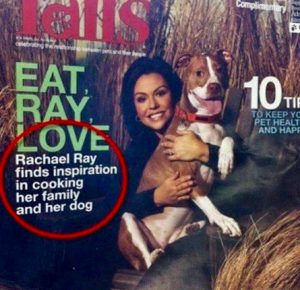The Writing Workshop: Basics of Punctuation
In professional communications of any kind, proper punctuation is essential. But this is especially true for marketing communications, where the copy helps define a brand. Grammar and punctuation mistakes can result in a loss of credibility—for both the agency and its clients. Here are a few tips for avoiding common mistakes.
The Comma
The goal is to make clear what you’re trying to communicate. If a comma doesn’t help make clear what’s being said, leave it out. And according to the Associated Press (AP), a leading authority on punctuation, “If omitting a comma could lead to confusion or misinterpretation, then use the comma.”
Here’s a good example:

The Apostrophe
An apostrophe is used to show possession, but its placement can be tricky. Follow this guide:
- Plural nouns not ending in s: women’s rights
- Plural nouns ending in s: physicians’ patients
- Singular nouns not ending in s: bank’s services
- Singular common nouns ending in s: the actress’s lines
- Singular proper nouns ending in s: Massachusetts’ losing football team
- Omitted figures and letters: the ’90s, don’t, it’s
Speaking of which …
It’s vs. Its
It’s = it is or it has (It’s a beautiful day.)
Its = the possessive of it (The dog chased its tail.)
The Hyphen vs. Dashes
The hyphen (-) connects two related words: world-class, second-largest, African-American.
The en dash (–) specifies a range (e.g., pages 1–10, September–October report, Oct. 15–Nov. 1) and also connects a prefix to two or more related words, of which one is a proper noun (e.g., post–World War II).
The em dash (—), in addition to attribution and datelines, is used to denote an abrupt change in thought or to set off a series in a phrase that would otherwise be set off by commas. (Side note: AP includes spaces around the em dash, as do some of our clients. AB&C style does not.)
Example 1: AB&C will be closed for the Eagles Super Bowl parade in Philadelphia—a four-hour event that will start at Broad and Pattison, and will end at the Art Museum—and will reopen at 10 a.m. Friday.
Example 2: Since the end of the last century, the number of opioid prescriptions—oxycodone, hydrocodone, methadone—has quadrupled, according to the Centers for Disease Control and Prevention.
Quotation Marks
In America, periods, commas, question marks and exclamation points go inside quotation marks. Colons and semicolons go outside quotation marks.
Example 1: “We’re changing the future of health care,” Bob said. “Join our team today!”
Example 2: Participants said they were “heavy smokers”: We controlled for participants’ level of tobacco use in our study.
The Exclamation Point
Use them sparingly. (Better yet, don’t use them at all, but instead show excitement through words.)
A Note About Consistency
Oftentimes, style is a preference—font treatment and punctuation in headlines, abbreviated terms in bullet lists, systems for outlining. The most important thing is to be consistent: If your first subhead on an ad has initial caps and no period, subsequent subheads should follow the same format.
And Spelling
It’s important. Spellcheck won’t catch actual words that are simply used in the wrong place, so be sure to read—and reread—your work.

Coming up: Active vs. Passive Voice. Plus, a note about word usage and tenses.
Sign up to receive our industry trends newsletter:
